Prostaglandin D2 delays CD8+ T-cell responses and respiratory syncytial virus clearance in geriatric cotton rats
- PMID: 39818970
- PMCID: PMC11852932
- DOI: 10.1128/jvi.01863-24
Prostaglandin D2 delays CD8+ T-cell responses and respiratory syncytial virus clearance in geriatric cotton rats
Abstract
Respiratory syncytial virus (RSV) infection is associated with increased rates of severe disease, hospitalization, and death in elderly individuals. Clearance of RSV is frequently delayed within this demographic, contributing to the more severe disease course. Geriatric cotton rats mimic this prolonged clearance kinetic and serve as a useful animal model for studying age-associated immunological deficits during RSV infection. Treatment with the cyclooxygenase (COX) inhibitor ibuprofen restores RSV clearance, indicating that inflammation contributes to impaired clearance in geriatric cotton rats. Here, we further characterize a compromised immune response in geriatric cotton rats and identify an inflammatory pathway that contributes to this deficiency. Dendritic cell (DC) activation and migration to mediastinal lymph nodes are decreased during early infection in geriatric cotton rats, resulting in delayed generation of cytotoxic T cells and virus clearance. Prostaglandin D2 (PGD2), which reduces DC migration through the elevation of D-type prostanoid 1 receptor (DP1 receptor), is elevated in the airways of infected geriatric cotton rats. Reducing PGD2 production by inhibiting COX-2 or PGD2 synthase improves RSV clearance kinetics through DC activation and RSV-specific CD8+ T-cell responses in geriatric cotton rats, whereas activation of DP1 receptor through an agonist resulted in delayed viral clearance in adult cotton rats. These results indicate that PGD2 contributes to delayed antigen presentation and CD8+ T-cell responses to RSV in geriatric cotton rats. Inhibiting PGD2 generation or signaling may be a useful mechanism of therapeutic intervention in elderly individuals.IMPORTANCEElderly adults are at increased risk of severe disease resulting from infection with respiratory syncytial virus (RSV), characterized in part by delayed clearance (removal of the virus from airways). Understanding the immunological factors that lead to this delayed clearance may allow for the development of therapies to improve disease outcomes in elderly individuals infected with RSV and other respiratory viruses. Here, we describe an inflammatory pathway in geriatric cotton rats, the preferred small animal laboratory model for RSV, that impairs the generation of an effective immune response. We show that inhibiting this inflammatory pathway in geriatric cotton rats improves immune parameters and speeds clearance of RSV. These results contribute to our understanding of delayed RSV clearance in elderly individuals with possible applications for improving immune responses to RSV in clinical settings.
Keywords: aging; cotton rat; prostaglandin D2; respiratory syncytial virus.
Conflict of interest statement
The authors declare no conflict of interest.
Figures
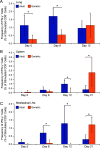
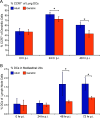

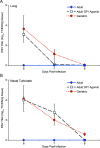

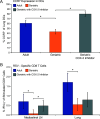
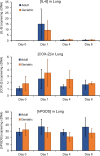
Similar articles
-
Nonsteroidal anti-inflammatory drugs restore immune function to respiratory syncytial virus in geriatric cotton rats (Sigmodon hispidus).Virology. 2021 Nov;563:28-37. doi: 10.1016/j.virol.2021.08.006. Epub 2021 Aug 13. Virology. 2021. PMID: 34411809
-
Prostaglandin D2 Levels Regulate CD103+ Conventional Dendritic Cell Activation in Neonates During Respiratory Viral Infection.Viral Immunol. 2018 Dec;31(10):658-667. doi: 10.1089/vim.2018.0090. Epub 2018 Nov 7. Viral Immunol. 2018. PMID: 30403582
-
Aged mice exhibit a severely diminished CD8 T cell response following respiratory syncytial virus infection.J Virol. 2013 Dec;87(23):12694-700. doi: 10.1128/JVI.02282-12. Epub 2013 Sep 18. J Virol. 2013. PMID: 24049171 Free PMC article.
-
Review of impaired immune parameters in RSV infections in the elderly.Virology. 2025 Feb;603:110395. doi: 10.1016/j.virol.2025.110395. Epub 2025 Jan 8. Virology. 2025. PMID: 39827596 Review.
-
Impairment of T cell immunity by the respiratory syncytial virus: targeting virulence mechanisms for therapy and prophylaxis.Curr Med Chem. 2009;16(34):4609-25. doi: 10.2174/092986709789760724. Curr Med Chem. 2009. PMID: 19903147 Review.
References
-
- Matias G, Taylor R, Haguinet F, Schuck-Paim C, Lustig R, Shinde V. 2014. Estimates of mortality attributable to influenza and RSV in the United States during 1997-2009 by influenza type or subtype, age, cause of death, and risk status. Influenza Other Respir Viruses 8:507–515. doi:10.1111/irv.12258 - DOI - PMC - PubMed
MeSH terms
Substances
LinkOut - more resources
Full Text Sources
Medical
Research Materials

